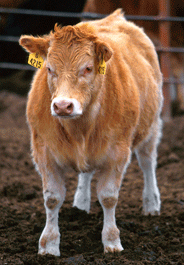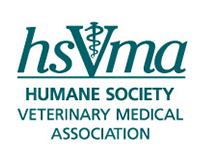The Science is Clear: Non-Therapeutic Antibiotic Use Increases RisksApril 14, 2014  Have you ever awakened to discover that you have been debating the wrong question? It amazes me how some can defend a position by simply changing the question of the debate. Actually, it is very clever. But it can also be deadly. For many years, medical and public health professionals have expressed concerns about the routine feeding of antibiotics to healthy livestock for non-therapeutic reasons. Also, the Food and Drug Administration, where I worked for 20 years, is on record with its concerns, first expressed more than 36 years ago. Most disconcerting is the fact that many antibiotics used routinely in animal agriculture are critical in the treatment of human illnesses. They are the same drugs, often manufactured by the same company. 80 percent of antibiotics produced in this country go into animal agriculture, but they’re often not used to treat sick animals. This routine, non-therapeutic pumping of drugs into livestock is commonly used to compensate for overcrowded, stressful, unsanitary conditions on industrial farms. It decreases the effectiveness of these drugs for treating sick people and animals, and puts us all at risk due to the rise of antibiotic-resistant infections that are costly and difficult to treat. As a practicing veterinarian, I was often frustrated by seeing the bags of antibiotics piled up in the feed stores to be sold to anyone who desires them. While all of us need a prescription from a doctor if we want to take antibiotics, in animal agriculture, with a few exceptions, anyone can buy as many of these bags as they care to – no questions asked! My dad, who also practiced veterinary medicine, resorted to the technique of asking a farmer “what all have you given this sick animal?” rather than, “has anything been given to this sick animal?” He knew that it was common for farmers to treat their animals with antibiotics obtained at the feed store and that they often were not forthcoming about having tried to treat their animals before calling in a professional. The problem with this lack of transparency is it makes it very difficult to understand what is happening and what the best treatment and drug is for the animal. After all, it is useless to give the same antibiotic, which apparently no longer works. Invariably, when discussing the connection between antibiotic resistance and agriculture, someone defending routine uses gets around to asking, “Where is the science?” The science they are asking about is proof that a bacterium developed resistance on a farm, and has been followed through the food supply and into its human victim, causing that person to become ill—or worse—die. What they know is that the lack of access to farms and the lack of transparency in general in agriculture make such studies almost impossible to conduct with scientific rigor. So, I wish to answer this question with science, and ask the agriculture industry to present their science. Science is very clear about the straightforward development of bacterial resistance to antibiotics. Science has shown repeatedly for many decades that when bacteria are exposed to even lethal levels of an antibiotic, some can survive. Through time, generations of survivors will genetically change and the antibiotic can no longer kill them. This is “survival of the fittest” in nature. It happens even when the antibiotic is used at a level that theoretically should kill most of the bacteria.  Rep. Louise Slaughter speaks at a 2012 briefing on Capitol Hill encouraging congress members to support the Preservation of Antibiotics for Medical Treatment Act (PAMTA). James Berglie for The HSUS Science has also proven repeatedly that when bacteria are exposed to non-lethal (non-therapeutic) levels of an antibiotic, development of resistance to the antibiotic is essentially assured. This is no longer debated in the scientific community. Repeated uses only exacerbate the problem. This is settled science about how nature works. It’s why doctors prescribe antibiotics at a therapeutic level and emphasize the importance of taking them as directed. It’s also why the medical community emphasizes that these important drugs be used only when necessary. For years, Rep. Louise Slaughter, D-New York, the only microbiologist in Congress, has championed the Preservation of Antibiotics for Medical Treatment Act bill. Sen. Dianne Feinstein, D-California, has led the effort in the Senate to statutorily phase out routine non-therapeutic uses of antibiotics. So far, Congress has failed to pass this critical, science-based legislation. On the other hand, the agriculture industry wants us to believe that nature suspends its rules on farms. They ask, “Where is the science showing that antibiotic resistance started at their facilities and spread to humans through the food supply?” This question exploits the lack of access and transparency in agriculture. It’s a red herring question that skirts around settled science. So here is my question: “Where is the science that shows nature suspending its rules on industrial animal agricultural farms?” Agriculture uses 80 percent of the antibiotics in America, largely through feeding the drugs to healthy livestock at non-therapeutic (non-lethal) levels. How is it that these practices can occur everyday on such a mass scale and not cause the development of resistant bacteria? The science is clear: One cannot routinely expose bacteria to non-therapeutic levels of antibiotics without dramatically increasing the danger of creating resistant strains. Likewise, science says unequivocally that agriculture cannot routinely use antibiotics at non-therapeutic levels in healthy livestock, yet truthfully claim they are not in part responsible for illnesses in humans. To think otherwise is voodoo science.

|
